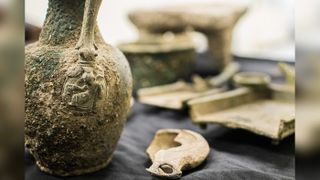Gig Workers are in the Driver’s Seat in
Europe. Is There Hope for the US?
It’s been quite a year for gig workers around the world. A year ago, platforms like Uber and Doordash were celebrating a costly success undermining workers’ rights in California. Thanks to continued organizing around the world, last week gig workers enjoyed major legal and regulatory victories in Europe. And an eye-opening new report on companies’ continued scofflaw behavior will help keep workers in the driver’s seat as the fight for worker rights continues.
On December 6, the United Kingdom’s high court ruled that they meant what they said in their landmark February 2021 ruling — and then some. After many years, the February ruling, reaffirming several lower court rulings, put to rest a longstanding battle over misclassification of drivers. This fight mirrored battles taking place worldwide over the question of whether all gig workers are self-employed or are employees of platform companies and therefore entitled to basic worker protections.
Despite a definitive loss in the UK court, Uber continued its legal fight to evade implementation of the judgment. Last week’s ruling was a testament to common sense, with the court stating even more firmly that Uber’s business model obligates it to take responsibility both for its clients and its drivers.
The ruling has the potential to upend a fundamentally exploitative business model. Uber and other platform companies have evaded taxes and other business costs via the fiction that they do not provide services to clients. By establishing that they do, the UK has pulled back the curtain on billions of pounds that the company may owe in past taxes and has certainly established the company will have to shoulder a tax burden going forward.
Then, after months of deliberation, on December 9 the European Commission issued a directive intended to provide overall guidance on platform work. Thanks to widespread organizing efforts, several European countries have dealt with a flurry of cases on rights protections for gig workers. To establish some overall clarity for all European Union countries, the Commission took a head-on approach to the employment question. Its new Directive, intended to provide guidance for national legislation throughout Europe, comes out clearly on the side of presuming that those working for platforms are, in fact, employed by the platforms. In this, it mirrors the commonsense “ABC test” in many U.S. state-level laws.
Even better, the EU has taken on a critical 21st century challenge to decent work: platforms can no longer hide behind codes and algorithmic management. Worker organizations in Europe have been contesting for workers’ right to know what data is being collected about them, and how it is being used.
Under the Directive, platform companies will have to make accessible to workers and their representatives information on everything from client ratings to use of surveillance technologies and how that information is being used. Better yet, they will be obligated to make a real human being available in cases where a worker wishes to contest an algorithmically determined decision.
The requirement to put a “human in the loop” is critical. As a staggering new report from Worker Info Exchange shows, earlier claims using Europe’s existing General Data Protection Regulation (GDPR) are simply not effective. As the report points out, gig workers have faced an “inordinate amount of unfair dismissals,” situations where the algorithmic black box simply terminates a worker from a platform with no explanation.
Without access to the codes — and the logic of decision-making — workers have had no recourse. As the report illustrates in case after case, individual workers seeking redress on a case-by-case basis are caught in surreal feedback loops, unable to access a real person to whom to explain their claims. In one typical case:
Pa Edrissa Manjang had been working with Uber for about a year when he was deactivated due to a selfie verification failure. . . . Pa was not given any warnings or notified of any issues until his dismissal; the Real Time ID verification system appeared to approve all of his photographs with a green check. Following his dismissal, Pa sent numerous messages to Uber to rectify the problem, specifically asking for a human to review his submissions. Each time Pa was told “we were not able to confirm that the provided photos were actually of you and because of continued mismatches, we have made the final decision on ending our partnership with you.” We obtained the selfies in question through a subject access request, which revealed that all of the photos Pa submitted were in fact of him.
In another typical case, the report describes a driver with a 4.95-star rating who had conducted more than 11,500 trips in over 5 years working for Uber. One day, his son picked up his second phone by mistake and thus he failed to respond to a single ID check that evening. The next day, Uber informed him that his account had been “flagged for suspicious application activity” and permanently closed his account and terminated his work.
Uber also reported the alleged “fraud” to the regulatory authority Transport for London, which immediately revoked the driver’s license. Uber was never compelled to provide any evidence to support the determination of fraud and the record from the actual phone device shows no record of activity in the evening in question.
These and numerous other cases illustrate just how difficult it has been for workers to pursue any claims, even when they have done nothing wrong, in the face of impersonal management by algorithm. Europe’s new Directive may have dramatic effects on the digital economy by requiring humans to take responsibility for the codes.
Will U.S. courts follow suit? On the classification issues, gig workers have been fighting an uphill battle. Despite a California Supreme Court victory and a pathbreaking piece of legislation, California’s Assembly Bill 5, gig companies fought hard to ensure they would not have to take any responsibility for their vast precarious workforce in that state. They succeeded, temporarily, in stopping enforcement of AB 5 with an expensive campaign around a ballot initiative, Proposition 22, last year. (A court subsequently ruled the measure was unconstitutional).
Nevertheless, rather than take stock of how they can adapt their business models to operate within the bounds of law, companies are pushing ahead with yet more initiatives to undermine laws and worker protections. Lately they have set their sights on Massachusetts. A lobby campaign funded by Uber, Doordash, Instacart, and Lyft persuaded some state legislators to introduce a Proposition 22-style bill that would overturn existing statewide labor regulation.
State-level campaigns are likely to continue. Already, gig companies have succeeded in creating pre-emptive regulation in Texas that indemnifies them from misclassification challenges.
Will the U.S. government consider national frameworks that set a baseline for gig worker protections in every state? A coalition of organizations led by the National Employment Law Project is pushing for a federally defined floor. U.S. Labor Secretary Marty Walsh has been supportive of enhancing gig workers’ protections, and under his leadership, the Labor Department took an important step to rescind a Trump-era rule that would have normalized misclassification.
The EU has taken a stand in favor of workers. Now it’s time for the United States to do the same.
Bama Athreya is host of The Gig Podcast and affiliated with the Just Jobs Network. She is also on the board of Worker Info Exchange.









